Project Subtitle:
Project Description:
It is now February of 2016 and at Scionwood Retreat, Kathryn and I have lived in a 100% sustainable sourced Net Zero Energy Home since 2006. It happened instantaneously nearly 10 years ago in September of that year. I will share our story with you and maybe it will encourage others to consider our Alternative Approach to becoming a Net Zero Energy Home. An approach that is available to all homeowners tomorrow.
In 1996 we moved into our modestly built but high performance HUD Code doublewide home built on a properly closed crawl space foundation. A building that was our private demonstration that any home can achieve a much higher percentage of its total potential if a few key elements of its building envelope and mechanical systems are actually properly completed as intended. You can read a short account of this approach to construction by reviewing, "The House that Bruce Built" at www.sivadhome.com. Additionally there is an addendum listing Enhancements to the original construction that have taken place over the years since the original construction. Yes we have lived in a very comfortable, durable, healthy, and energy efficient home now for 20 years.
With the above material as the backdrop, we arrive at September 2006 in our ten year old home. Kathryn and I had been to watch the Al Gore inspired film, An Inconvenient Truth. As we walked out Kathryn said, "I wish that we could personally do something". At that point I said well maybe we can; let me do some calculations when we get home. Once home I added up the kWh from our utility bills for the previous 12 months for our all electric home which includes an electric water well pump. In our state of North Carolina we had and continue to have a home grown sustainable energy production program called NC Green Power. The organization recruits and pays providers to produce sustainable electricity and feed it into the electricity grid. It also recruits customers who want to use sustainable energy and sells them blocks of 100kWh for $4.00 each.
We divided our total kWh needed annually by 12 months. Ten blocks would not meet our need but eleven blocks more that met our requirement. We filed our request for NC Green Power to provide us with eleven blocks of electricity for $44.00 per month and poof we were a 100% equivalent sustainable energy home. Each month the electric utility bill arrives with all the electric company's charges on it plus an additional NC Green Power charge for $44.00. We make one payment and all is done. If you want to be more technical and want to address electricity transmission and distribution losses which the U.S. Energy Information Administration estimates at an average of 6% then according to my calculations we could have been at times only a 99% sustainable home in any given year. However as you will see we addressed that in subsequent years and actually became a home providing substantially more energy than we needed even when counting line losses.
In 2011 we added onsite a 3.5KW solar electric panel array with battery backup. At that time we continued to purchase the eleven blocks of NC Green Power to help cover some of the other toes of our overall carbon footprint. In 2015 we added an additional 3.4KW array and reduced to five our purchase of NC Green Power. On an annual basis we now produce more than 66% of our kWh needs on site. With our NC Green Power purchase we continue to provide more kWh than we need for our home. We have benefited from already having a reasonably efficient home. Some homeowners may need to start with work that improves the efficiency of their home. Others may want to start down both paths at the same time. Deciding to actually take steps toward the goal is the important element.
There are several important aspects of our initiation of this Alternative Approach to achieving a Net Zero Energy Home to consider. We did not need to have a large financial investment. We did not need to figure out what equipment to purchase. We did not need to maintain any equipment. And we did not need to find a qualified contractor. If you use a combination of fossil fuel and electricity in your home, there are conversion formulas that will provide the total equivalent amount of Sustainably produced kWh for which you will need to contract. Purchase the necessary amount of sustainable energy monthly from any number of available sources and take an important step that improves the potential for humans on this earth.
Our home could be located anywhere and be of any orientation or construction type.
It is an approach that is compatible with the realities of families that have less financial resources but who want to be a part of and help build our sustainable energy future.
Since we began in 2006 we have influenced a few others to pursue our path. We hope that our sharing in this format will encourage additional participation.
Please consider pursuing this purchased power option as a valid approach to achieve a Net Zero Energy Home for yourself. Additionally, please consider encouraging others to support and pursue this as a valid alternative approach.
Building Type Summary:
Other Awards:
none
Address:
Elevation:
Lat. / Long.:
Location Type:
Köppen Climate Type:
Climate Region:
Solar Insolation:
Annual HDD :
Annual CDD:
HDD Base Temp:
CDD Base Temp:
Occupancy Type and Details:
Homeowners of this building and we live here full time. Two adults. At home much of the time. Retired but still active.
When we built this home in 1996 there were also 2 active teenagers living in the home.
Conditioned Floor Area:
Conditioned Building Volume:
Semiconditioned Floor Area:
Unconditioned Floor Area:
Multiple buildings?:
Total number of units in project (all buildings):
Total floor area of project (all buildings):
Historic?:
Completion date:
Site description:
The 16 acre site is largely mixed timber with wild brush and undergrowth But it does have two open areas near each other totaling about 3 acres that are located toward the back of the property. A driveway with partial gravel makes its way from the county gravel road to the open areas where our home is located. Flowing across the middle of the property are two separate small spring fed streams that flow year round. The front and back areas of the property are of a higher elevation than the middle area with the two streams. The driveway already had a causeway built across the wetlands with a culvert for each stream. A larger stream forms the eastern boundary of the property. Wonderful...
Materials:
This home was factory built 100 miles away with no notion with regard to sustainable construction methods or materials.
Being factory built the company does work to efficiently construct and deliver the unit and the reduction of waste is in their financial interest.
Energy Highlights:
This home began in 1996 as an all electric, high performance, modest cost to build home that is durable, comfortable, and supportive of the health of its occupants. In 2006 it became a Net Zero Energy Home through the use of purchased sustainable energy from NC Green Power. We purchased on a monthly basis an amount of kWh that yearly exceeded our total annual use. We could easily do this because our home was not an energy hog and an institution had been created in our state that provided this service. We have continued to enhance the efficiency of our home over the years. Plus we added a 3.5 KW PV unit with battery backup in 2011 and another 3.4 KW PV unit in 2015. With the 2015 addition we reduced our NC Green Power purchase to a total of 6000 kWh annually. Beginning in 2006 until late 2015 we annually purchased 13200 kWh [11 blocks of 100 kwh for $44.00 each mo.] This purchase power approach is our key strategy that we want to highlight.
LCA Description:
No Life-Cycle Analysis was used. We designed our home to be inexpensive to build, equip, and operate and to do so while meeting our high standards for health, comfort, and durability. It is the minimum home that anyone would want to build!
Annual renewable energy generated:
Electric Utility Company:
Datasets and Utility Bills sources and reliability:
We have kept a record of the monthly electricity use by reading the house utility meter monthly since 1996. We wanted calendar month data as opposed to the mid month billing that the utility provided. However, on an annual basis they would essentially be the same and I imagine they have historical records. Once we added PV at our home to the mix we not only recorded the utility meter data, we recorded the data each month from the PV system meter. By the way, we have a net meter agreement with the utility. For the purchase power, NC Green Power will have all the records of our monthly purchases. They would have all their data with regard to contracts with producers and with purchasers.
Energy Storage Capacity:
Energy Storage type:
Backup batteries [2011 system] are kept charged but are only used during those times [multiple times in our location] when the grid goes down. The transfer is automatic when the grid goes down. Sometimes we do not even realize that the grid is down. When the grid fails, the heat pump, range, dryer, and the water heater are locked out. All remaining electrical functions are available for use. With prudent use we can go for days with the grid down. Yes we have backup heating with a wonderful, sealed combustion wood stove. Plus we have an outdoor grill for cooking and heating water and lines for drying clothes. Our primary interest is keeping the water pump working and running the refrigerator and freezer, plus maintaining communications.
CHP System Description:
none
Foundation wall assembly:
Concrete footers were poured for all the concrete block piers that carry the weight of the home from the I-Beams and for the parameter brick curtain wall that totally encloses the properly closed crawl space. Prior to pouring the concrete for the parameter footer the tie-down anchors were augered into the footer trench.
The single brick width curtain wall foundation is not insulated. Its height ranges from 3.5 to 4.5 feet tall.
The home is 28 feet wide and 64 feet long.
Above grade wall assembly:
2x6 wall assembly with R-19 fiberglass batts. The interior surface is 1/2 inch sheetrock and the exterior is 1/2 inch OSB with vinyl siding
Cathedral ceiling assembly:
100% of the ceiling is a cathedral assembly using a 2 x 4 truss system
Because it is HUD Code, the ceiling assembly for each half is fully constructed and then placed onto each half of the home as a unit which substantially reduces the wall to attic air leakage paths. The ceiling is 1/2 inch sheetrock and the insulation is blown cellulose.
Door Area:
Space heating - Manufacturer & Model:
Space heating - capacity:
Space cooling - Manufacturer & Model:
Space cooling - capacity:
Domestic hot water - Manufacturer & Model:
Domestic hot water - capacity:
Domestic hot water - efficiency:
Ventilation - Manufacturer & Model:
Process:
A whole range of Applied Building Science key issues that address the structure, its mechanical systems, and the well being of occupants were addressed in the design of this home. In essence I built [or bought] what I taught. See "The House that Bruce Built" at www.sivadhome.com. Also see "The House that Bruce Built: Enhancements 1.0 - 6.0 at the same site. The practical, basic principles that need to occur to ensure that a home actually becomes its potential.
Design for Adaptability:
Exterior and interior doors are 36 inches wide, with only two interior door exceptions. The height of the crawl space is such that there is a comfortable amount of space to pursue revisions as desired. The crawl space is clean and dry given that it is a properly closed crawl space. The limited length hallway is 42 inches wide in place of the traditional 36 inch wide hallway.
Other Software tools:
Tom Honey used several solar program tools for his 2011 and 2015 PV installations.
Energy Modeling Software:
During the building design phase the Elite software available in 1995 was used.
Jack Orum of Design Aire used the Rightsoft suite of programs to provide his J, D, S, and T information for the Heat Pump system and to supplement the Duct design for the ERV. Jack is known for sizing duct systems to be very quiet. You do not know if the system is on or off you are just very comfortable.
Outcome of project goals:
Very often the most important part of the construction process are the persons that you hire to perform the work. The quality of their knowledge and ability to actually perform the work as intended makes all the difference in the world. Performance standards need to be in agreement prior to work beginning. Buying say a SEER 13 piece of equipment and actually having it operate on-site as SEER 13 depends on the installer. We often refer to "Lucky 7" systems. You pay for a SEER 13 and you are lucky if it delivers SEER 7 because of the inadequate installation.
The original set up contractor had to be dismissed. While there are detailed set up instructions, he followed none of them. We asked around and hired a wonderful contractor who very easily and methodically proceeded through the processes and delivered the expected work. The General Contractor had to pay for this extra subcontractor out of his specified budget, not us. What we would have received had we not insisted on correct work [we had a copy of the required set up processes] would have been horrible for years to come.
Discrepancies:
Our home has just been wonderful and actually delivered as intended. However living in it has been so much more enjoyable than we anticipated - even to this day it is so pleasant.
Finances Description:
In September of 2006 we started with our reasonably energy efficient 1996 home. It is not a "World Record Setter" but it is good enough. For our all electric home we calculated the total kWh used over the previous 12 months. We divided that by 12. We determined that we would need on average 1100 kWh per month to equal more than our current annual usage. North Carolina Green Power sells access to produced sustainable power from multiple sources. They sell blocks of 100 kWh for $4.00 per block. We needed 11 blocks per month for $44.00 per month. We contracted with NC Green Power for the 11 blocks. The $44.00 charge is listed on our monthly electric utility bill. We pay it. The funds are passed on to NC Green Power. NC Green Power continues to contract with providers to feed sustainable power into the grid. We are happy with our personal, direct, real commitment to addressing climate change. Repeat. Repeat. Simple. Simple for anyone. Happy. Go do it. Do not need a special home or a home with a special orientation, or solar access, or finances, or knowledge of equipment, or how to maintain equipment, and the list go on. Poof you live in a Net Zero Energy Home.
Federal incentives:
N/A except that since NC Green Power is a not for profit our total annual contributions to purchase power is a regular tax deduction
State incentives:
N/A except that since NC Green Power is a not for profit our total annual contributions to purchase power is a regular tax deduction
Local incentives:
none
Utility incentives:
none
Other incentives:
None other than our desire to work with others to help maintain the only planet where human beings can live so that our descendants will have a place to live.
Advice:
Just give it a try. It is quick, direct, and easy.
Some participants may want to follow a double track. Commit to energy efficiency upgrades and to purchased power and meet in the middle over time.
There are conversion formulas for fossil fuels to kWh so that you can cover all your home energy use.
We chose to use an in state organization to help build our local infrastructure, but there are multiple organizations out there offering this power and some of it is cheaper than we are paying.
NESEA Awards:
none
Published References:
The House that Bruce Built, 1997/1998, www.sivadhome.com
The House that Bruce Built: Enhancements 1.0 - 6.0, ongoing, www.sivadhome.com
Special architectural measures:
The long axis of the home was oriented east/west. The east and west walls of the home have only one window each. The long south side of the home has windows that receive full sun in winter and some shading in summer. The walls were upgraded to 2x6 lumber. The R-values were above common practice at the time of construction. The design was intentionally simple so that the workers would be much less prone to make the multiple air barrier and thermal barrier mistakes that we find in most buildings. Thus the two barriers work together and are continuous throughout the whole structure. The traditional moisture issues of crawl space homes in the south was addressed through the use of a properly closed crawl space which delivers durability, comfort, health, and efficiency benefits. The result is a home that in life achieves a higher percentage of its potential as listed on its design papers. The mechanical equipment [heat pump and ERV] are well designed and installed. Quiet, wonderful, inexpensive comfort.
Energy Strategies:
Start with a wonderfully comfortable, simple home that is energy efficient. Enjoy it. At ten years of use start and continue purchasing sustainable power to be put into the electrical grid in an amount that exceeds the total energy use of the home. Enjoy it a whole lot more knowing that for an extra $44.00 per month paid through the electric utility you have demonstrated the feasibility that anyone can have a Net Zero Energy Home. A personal choice to impact climate change and help secure the continued potential for human beings to have a place to live. Encourage others...
Energy Use and Production Documentation:
Above grade wall R-value:
Cathedral ceiling R-value:
Project Photos:
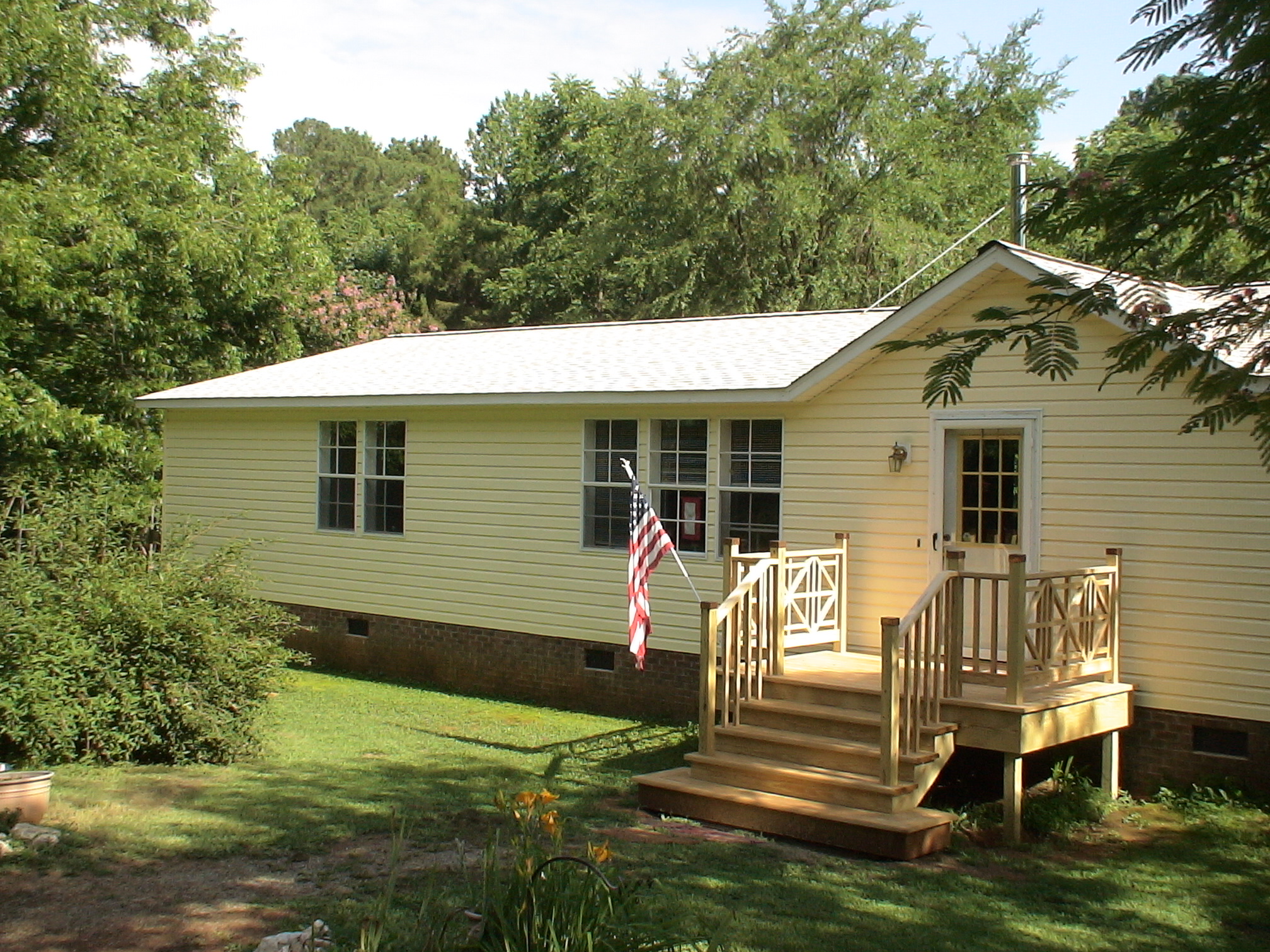
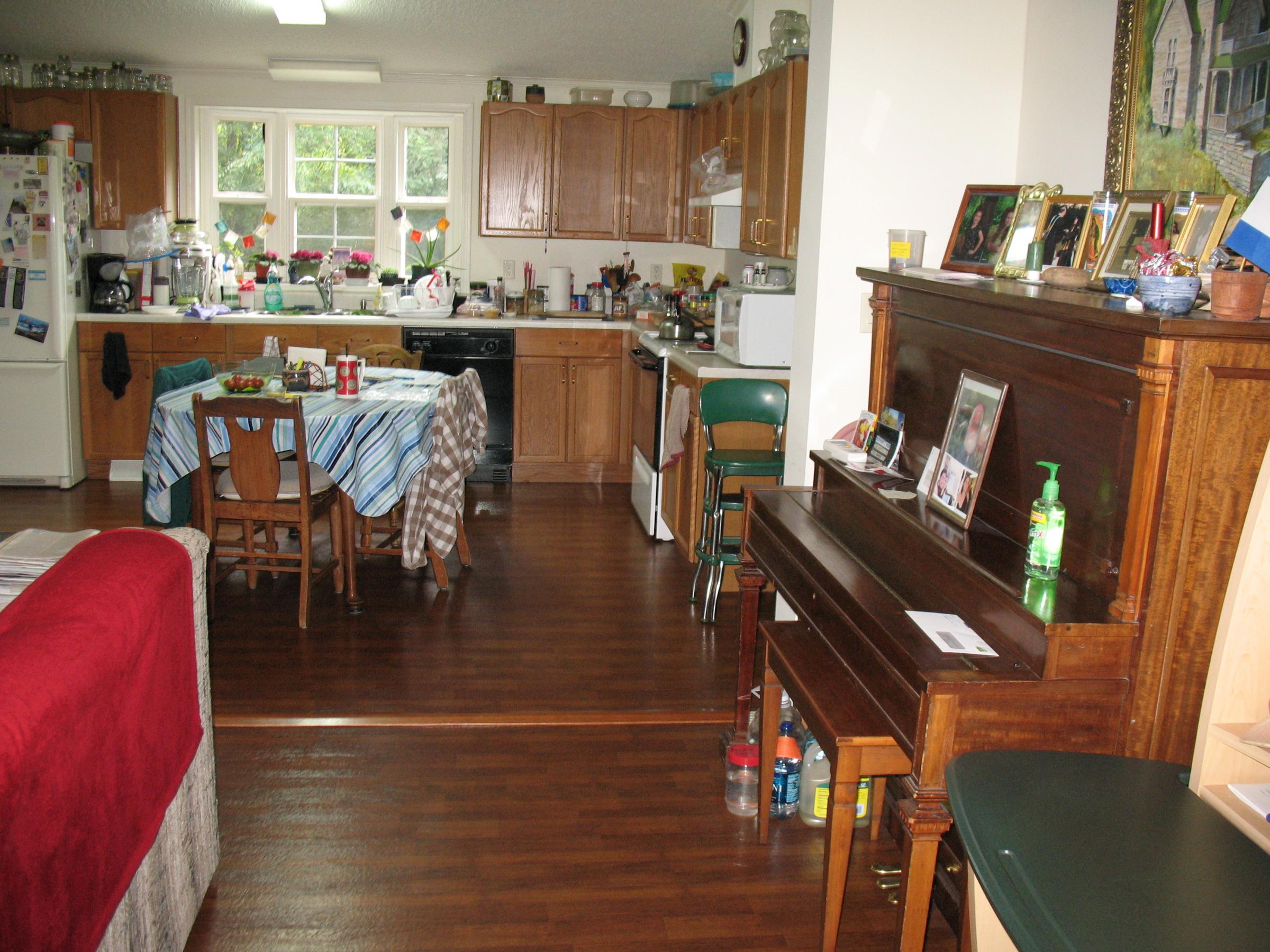
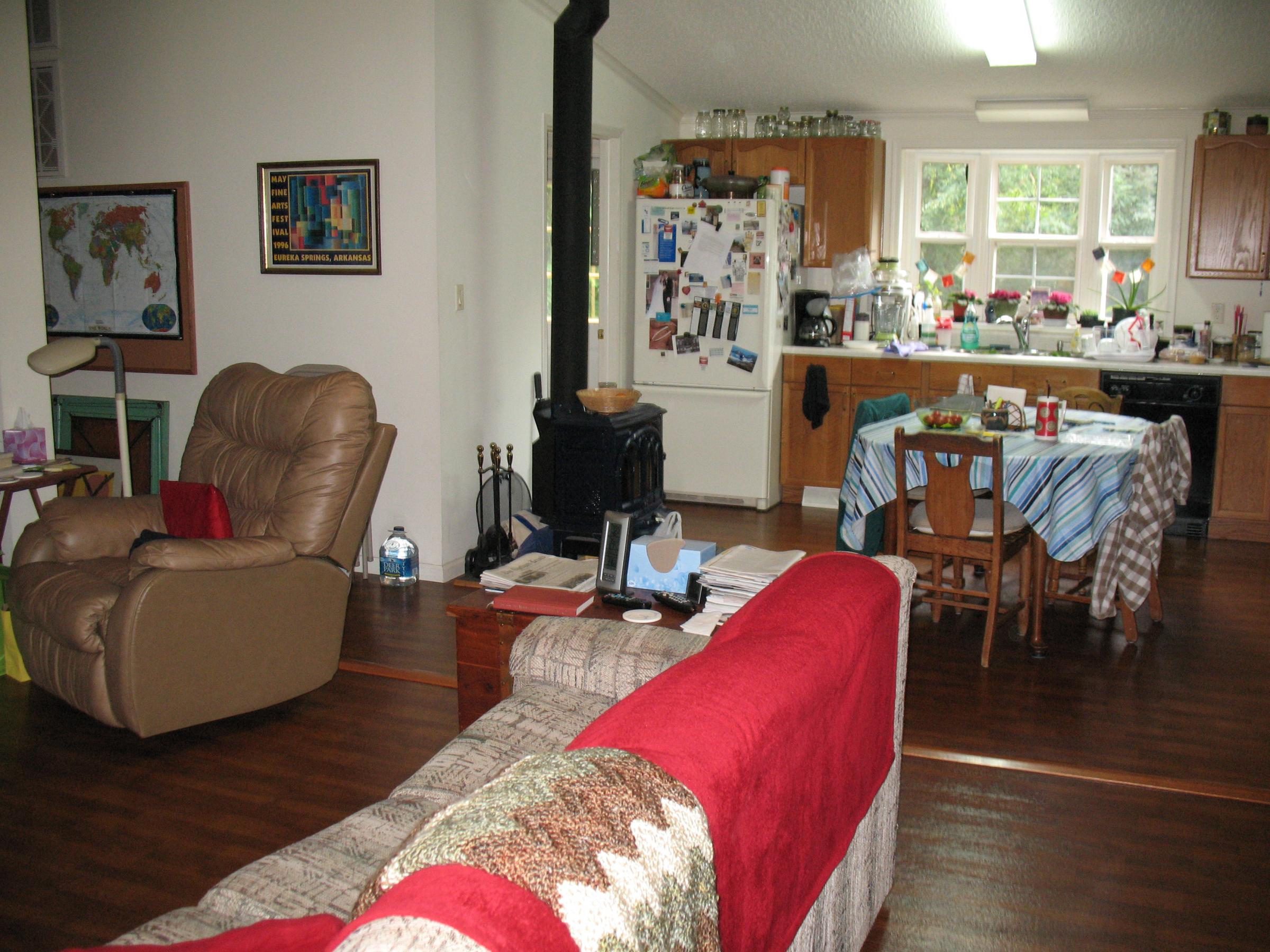
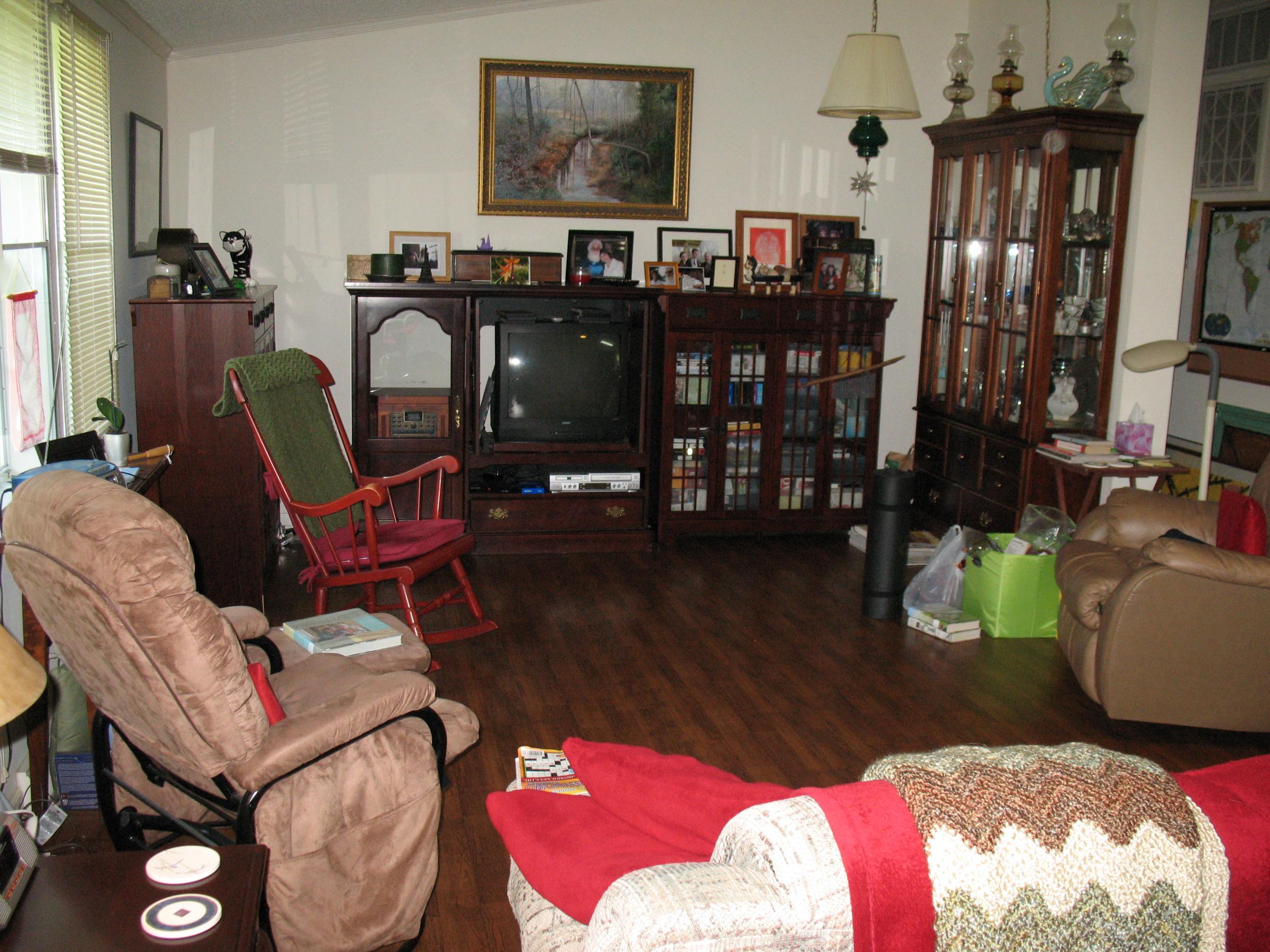
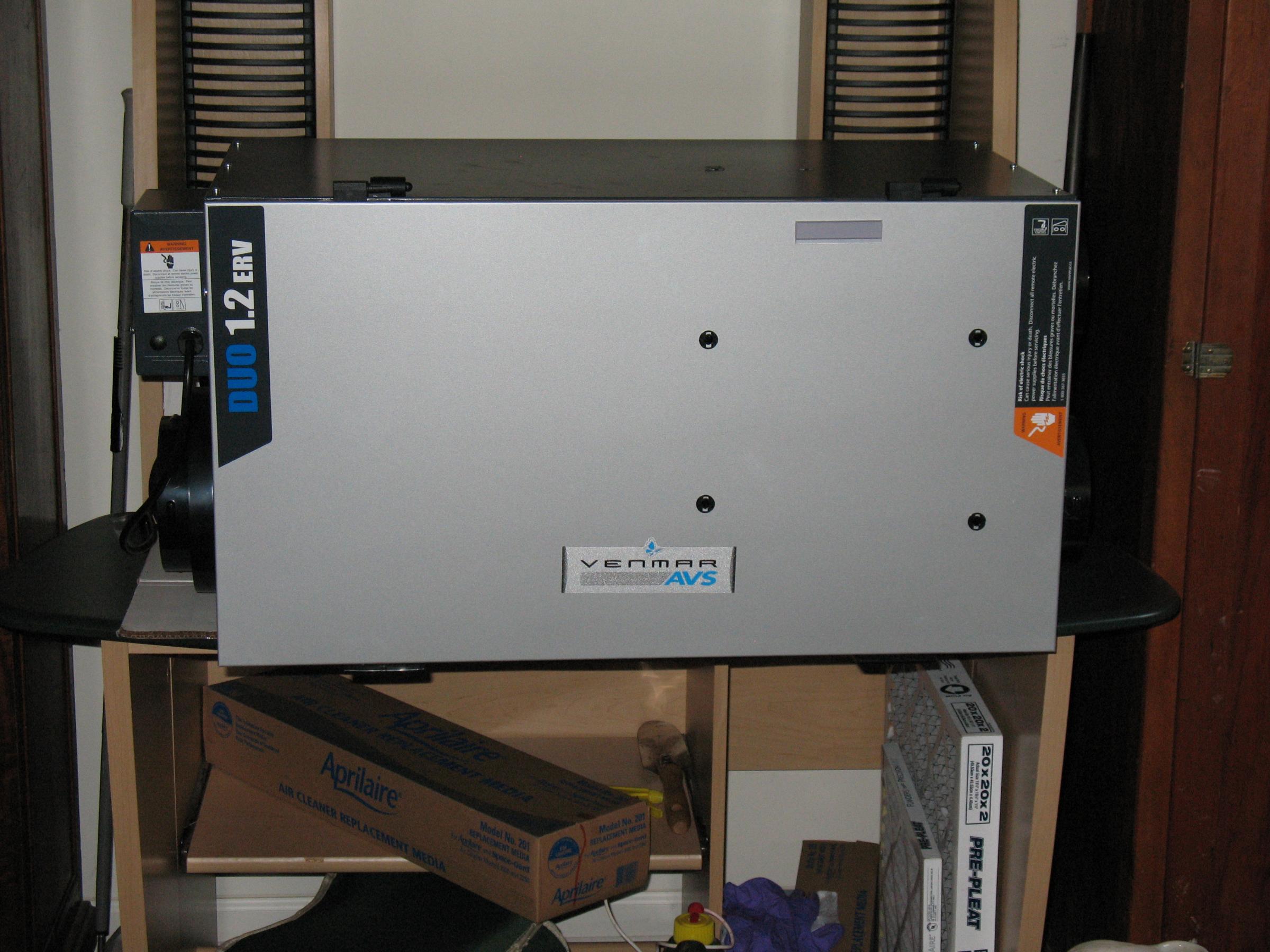
Number of Bathrooms:
Scope Description:
We moved into our all electric new home June 11, 1996. It is the home to which in September 2006 we applied 100% sustainably produced power that we began purchasing monthly from North Carolina Green Power through our local electric utility. With that ongoing purchase arrangement of the necessary amount of power we became a Net Zero Energy Home. We have continued purchasing power while adding on-site 3.5 KW PV in 2011 and 3.4 KW PV in 2015. In 2015 we did reduce that amount of power we are purchasing each month. We still purchase enough extra NC Green Power to maintain our position as a Net Zero Energy Home.
Site conditions:
Renewable Energy Sources:
Other Purchased Fuels Description:
We are an all electric home. Originally the utility was Carolina Power and Light. Then it became Progress Energy. Then it was purchased and now the name of the grid we are attached to is Duke Energy Progress.
Storage Strategies & System Details:
There are 8, 380ah, 6 volt lead acid L16 batteries in the battery box. They are kept charged by the system to be ready for a grid power outage.
Summary of enclosure strategy/description:
This is an on-frame HUD Code doublewide. It measures 28' x 64' = 1792 sq. ft. Concrete footers were poured for all the concrete block piers that carry the weight of the home from the I-Beams and for the parameter brick curtain wall that totally encloses the properly closed crawl space. Prior to pouring the concrete for the parameter footer the tie-down anchors were augered into the footer trench. Following construction below grade foundation water-proofing and a drain to daylight parameter french drain was installed. The finish grade of the soil drains all surface water away from the foundation.
The home uses 2 x 6 wall framing and a 2 x 4 roof truss system with cathedral ceilings throughout the interior and approximately a 3/12 roof pitch.
Insulation values are: Ceiling R-30, Walls R-19, Floor R-22
The windows are intentionally simple. Single-hung, none treated, single-pane glass in an aluminum frame plus and interior single-hung of the same materials. The two windows are separated by the wall framing leaving a 5 inch space.
Space conditioning is provided by a standard heat pump and an energy recovery ventilator. Separate airtight ducts systems were site installed for each.
The properly closed crawl space has a continuous and sealed poly vapor retarder for the ground and walls - leaving a 3 inch view strip at the top of the foundation wall. A dehumidifier with gravity drain to outside manages the minimal water vapor that migrates into the space.
Roof Assembly:
2 x 4 truss system
The home is 28 feet wide and 64 feet long.
each section is 14 wide and 64 feet long.
The attic has soffit and ridge venting and the decking is 1/2 inch OSB with shingles.
Window Description:
Intentionally inexpensive aluminum frame single-hung windows with non-coated single-pane glass.
Interior single-hung storm window of the same materials with the two windows separated by the wall framing leaving a 5 inch space between them
No record of U-factor, SHGC, etc.
Cheap windows
Door Description:
foam core filled steel door [3' 0" x 6' 8"] with one third of its area being an insulated glass sandwich fixed window light
Number of Bedrooms:
Team Members:
Bruce Eugene Davis, Sivad Home, Applied Building Science, Home Designer, Energy Consultant, Home Owner - 1995 to present
R-Anell Custom Homes, Builder - 1995
Jack Orum, Design Aire, HVAC Design and Installation, Owner & Installer, Service - 1995 to 2007
North Carolina Green Power, provides off-site sustainably produced electricity, billed through Electric Utility - 2006 to present
Tom Honey, Honey Electric Solar, PV Design and Installation, Owner & Installer, Service - 2011 and 2015

Mechanical Equipment Installation Details and Comments:
Manuals J,D, S, & T were used in design and selection. With room by room calculations present, air distribution was balanced with air flow measurements. The complete air distribution system including the air handler was tested with a duct blaster and found to have less than 5 CFM25 Total air leakage. System performance was achieved by establishing correct air handler air flow and then establishing proper refrigerant charge. The 7KW heat strip is locked out until outside temperature drops to 20 degrees F.
The ERV ventilation system has a separate sealed air distribution system that was tested with a duct blaster and found to have less than 5 CFM25 Total air leakage. Balanced air flow into and out of the home was achieved by using through the cabinet pressure taps and the resulting air flow measurements at the ERV and then making adjustments to the balancing dampers. There is a simplicity to using a separate duct system for the ERV that avoids a lot of installation mistakes that we find where space conditioning and ventilation equipment are connected to the same duct system.